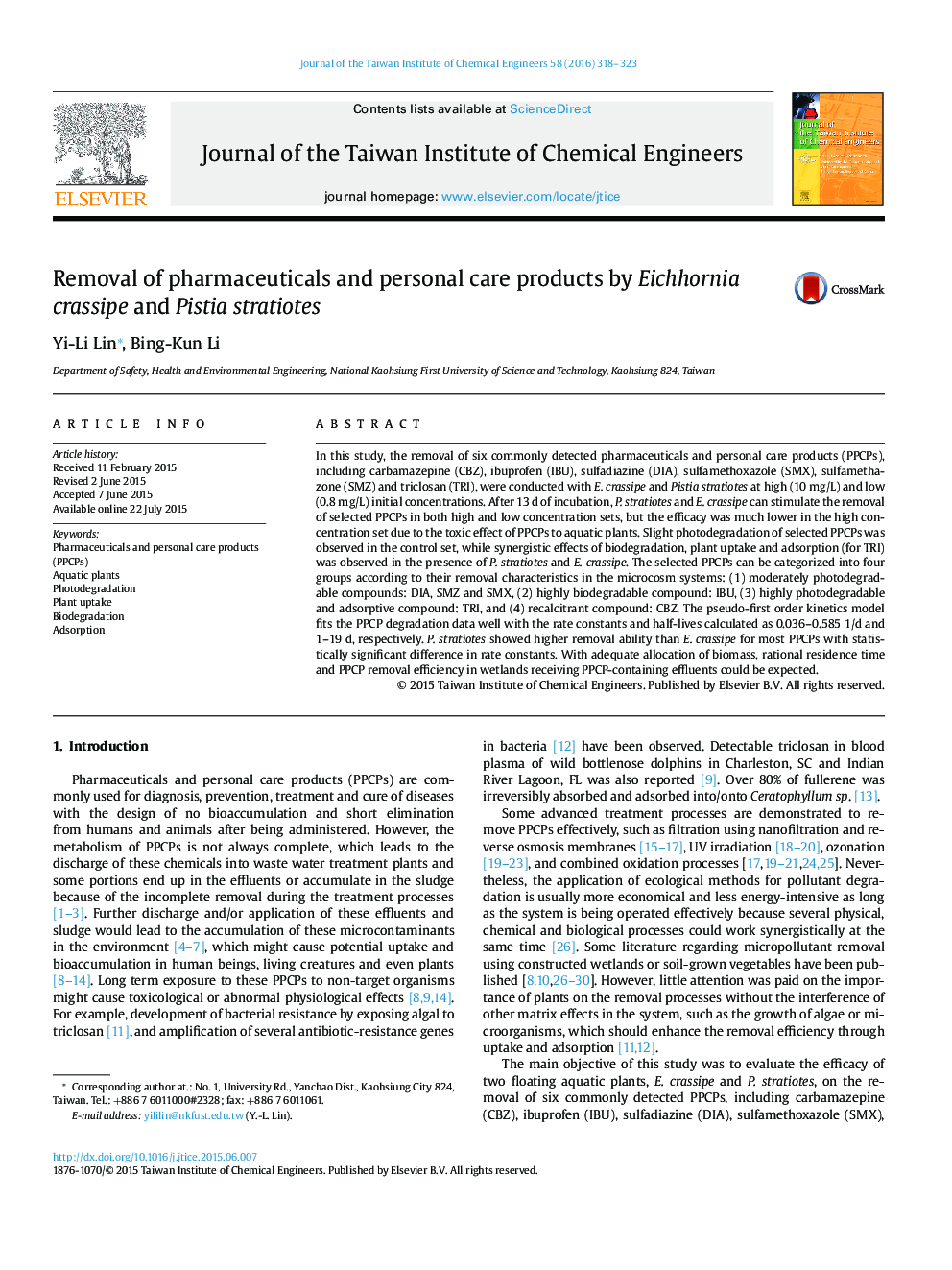| Article ID | Journal | Published Year | Pages | File Type |
|---|---|---|---|---|
| 690669 | Journal of the Taiwan Institute of Chemical Engineers | 2016 | 6 Pages |
•Pistia stratiotes and Eichhornia crassipe both stimulated PPCP removal.•High PPCP concentration caused toxic effects to aquatic plants and reduced removal efficiency.•Photodegradation, biodegradation, plant uptake and adsorption happened synergistically.•PPCP degradation followed the pseudo-first order kinetics model.•Adequate allocation of biomass could ensure rational residence time and PPCP removal in wetlands.
In this study, the removal of six commonly detected pharmaceuticals and personal care products (PPCPs), including carbamazepine (CBZ), ibuprofen (IBU), sulfadiazine (DIA), sulfamethoxazole (SMX), sulfamethazone (SMZ) and triclosan (TRI), were conducted with E. crassipe and Pistia stratiotes at high (10 mg/L) and low (0.8 mg/L) initial concentrations. After 13 d of incubation, P. stratiotes and E. crassipe can stimulate the removal of selected PPCPs in both high and low concentration sets, but the efficacy was much lower in the high concentration set due to the toxic effect of PPCPs to aquatic plants. Slight photodegradation of selected PPCPs was observed in the control set, while synergistic effects of biodegradation, plant uptake and adsorption (for TRI) was observed in the presence of P. stratiotes and E. crassipe. The selected PPCPs can be categorized into four groups according to their removal characteristics in the microcosm systems: (1) moderately photodegradable compounds: DIA, SMZ and SMX, (2) highly biodegradable compound: IBU, (3) highly photodegradable and adsorptive compound: TRI, and (4) recalcitrant compound: CBZ. The pseudo-first order kinetics model fits the PPCP degradation data well with the rate constants and half-lives calculated as 0.036–0.585 1/d and 1–19 d, respectively. P. stratiotes showed higher removal ability than E. crassipe for most PPCPs with statistically significant difference in rate constants. With adequate allocation of biomass, rational residence time and PPCP removal efficiency in wetlands receiving PPCP-containing effluents could be expected.
Graphical abstractFigure optionsDownload full-size imageDownload as PowerPoint slide
